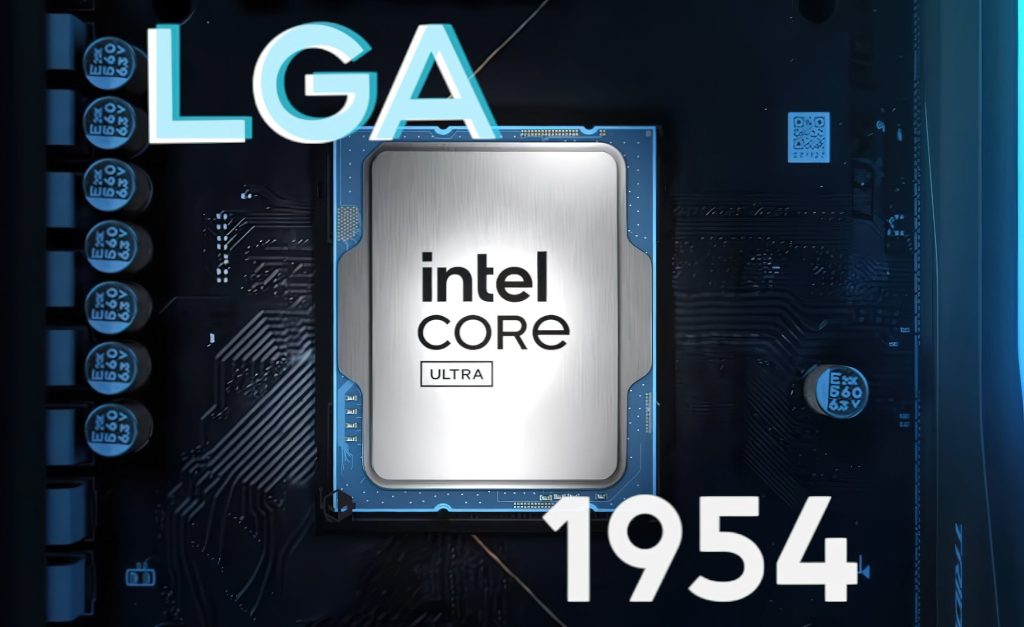Intel plans to introduce a new socket, known as LGA 1954, for its upcoming Nova Lake-S Desktop CPU series. This initiative marks a transition from the LGA 1851 socket, which was initially launched with the Arrow Lake-S “Core Ultra Series 2” processors. Although the Arrow Lake family aimed to enhance gaming performance, it received mixed reviews, particularly underperforming in gaming compared to expectations, despite notable improvements in multi-threading and efficiency.
Transition from LGA 1851 to LGA 1954
The LGA 1851 socket has been utilized in recent 800-series motherboards and is expected to serve the Arrow Lake refresh, which will introduce enhancements to the neural processing unit (NPU) and add new features. Following this refresh, Intel is anticipated to move to the LGA 1954 socket for the next-generation Nova Lake-S CPUs, projected for release in the second half of 2026.
Speculations indicate that Intel will significantly increase core counts in the Nova Lake series, with rumors suggesting configurations featuring up to 16 Performance Cores (P-Cores) and 32 Efficiency Cores (E-Cores). These processors are expected to be available for both desktop and laptop platforms, utilizing the new LGA 1954 socket on their reference evaluation platforms.
Future Intel CPU Generations
While the specifics of socket usage have not been officially confirmed, Intel has a history of transitioning to new sockets after two generations of CPUs. Additionally, the subsequent generation, anticipated to be called Razer Lake, is also expected to adopt the LGA 1954 socket. This upcoming series may utilize 900-series chipset motherboards, while Nova Lake-S is likely to be categorized under the Core Ultra Series 4 brand.
| Intel CPU Family | Processor Process | Processor Architecture | Graphics Architecture | Processors Cores/Threads (Max) | Platform | Memory Support | PCIe Support | Launch |
|---|---|---|---|---|---|---|---|---|
| Alder Lake (12th Gen) | Intel 7 | Golden Cove (P-Core) Gracemont (E-Core) |
HD 700 Series | 16/24 | LGA 1700/1800 | DDR5 / DDR4 | PCIe Gen 5.0 | 2021 |
| Raptor Lake (13th Gen) | Intel 7 | Raptor Cove (P-Core) Gracemont (E-Core) |
HD 700 Series | 24/32 | LGA 1700/1800 | DDR5 / DDR4 | PCIe Gen 5.0 | 2022 |
| Raptor Lake Refresh (14th Gen) | Intel 7 | Raptor Cove (P-Core) Gracemont (E-Core) |
HD 700 Series | 24/32 | LGA 1700/1800 | DDR5 / DDR4 | PCIe Gen 5.0 | 2023 |
| Arrow Lake (Core Ultra 200) | TSMC N3B | Lion Cove (P-Core) Skymont (E-Core) |
Xe1 (Alchemist) | 24/24 | LGA 1851 | DDR5 | PCIe Gen 5.0 | 2024 |
| Arrow Lake Refresh (TBD) | TSMC N3B? | Lion Cove (P-Core) Skymont (E-Core) |
Xe1 (Alchemist) | TBD | LGA 1851 | DDR5 | PCIe Gen 5.0 | 2025 |
| Nova Lake (Core Ultra 400?) | TBA | Coyote Cove (P-Core) Arctic Wolf (E-Core) |
TBA | 52/52? | LGA 1954? | DDR5? | PCIe Gen 6.0? | 2026 |
| Razer Lake (Core Ultra 500?) | TBA | TBA | TBA | TBA | LGA 1954? | TBA | TBA | 2027? |

